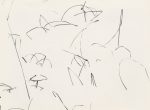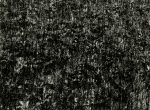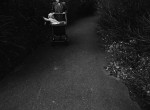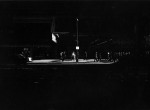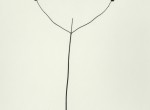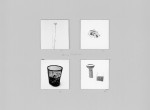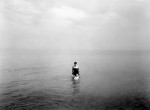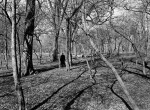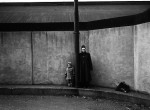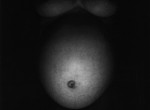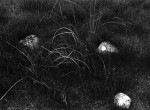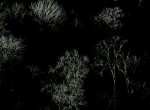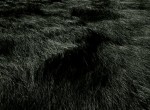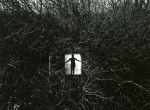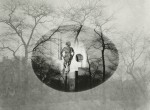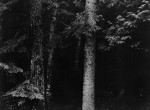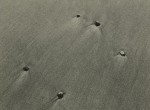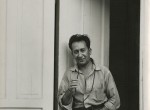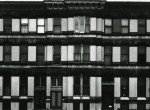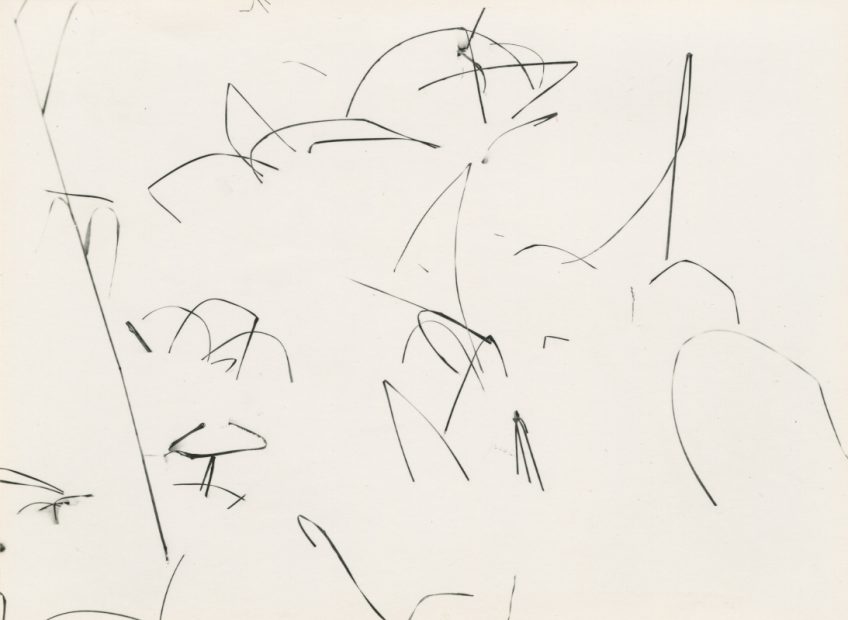 Weeds Against Snow, Detroit, 1943Gelatin silver photograph. 1940s-e. 1950s print. Backing board with American Federation of Arts label for Harry Callahan Weeds Against Snow in a circulating show called Abstract Photography, Sept/, 57-Spet. 58.Contact For Pricing & Availability
Weeds Against Snow, Detroit, 1943Gelatin silver photograph. 1940s-e. 1950s print. Backing board with American Federation of Arts label for Harry Callahan Weeds Against Snow in a circulating show called Abstract Photography, Sept/, 57-Spet. 58.Contact For Pricing & Availability
5 3/16 x 6 15/16 in.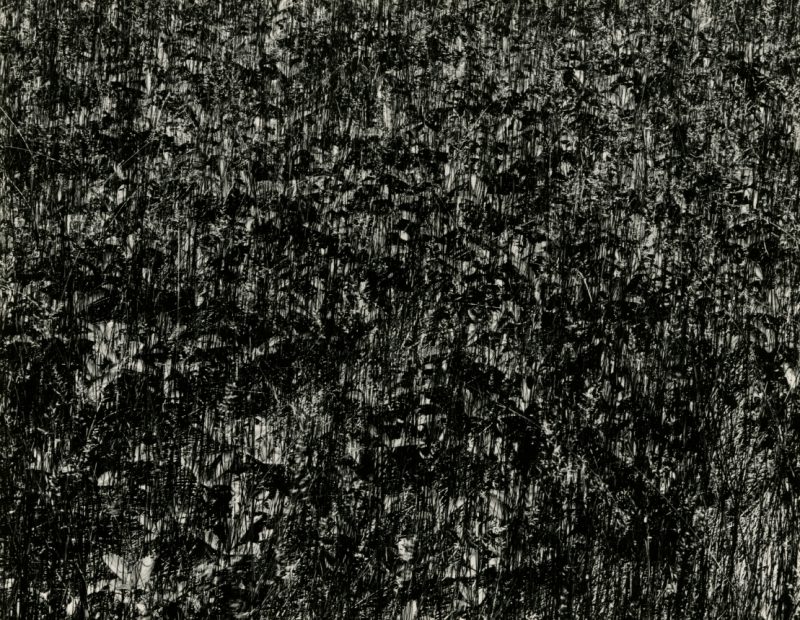 Port Huron, MI, 1952Gelatin silver photograph on mount. 1950s to early 1960s print. Signed in pencil by artist on mount recto. "VII" gallery stamp on verso.Contact For Pricing & Availability
Port Huron, MI, 1952Gelatin silver photograph on mount. 1950s to early 1960s print. Signed in pencil by artist on mount recto. "VII" gallery stamp on verso.Contact For Pricing & Availability
5 7/8 x 7 1/2 in.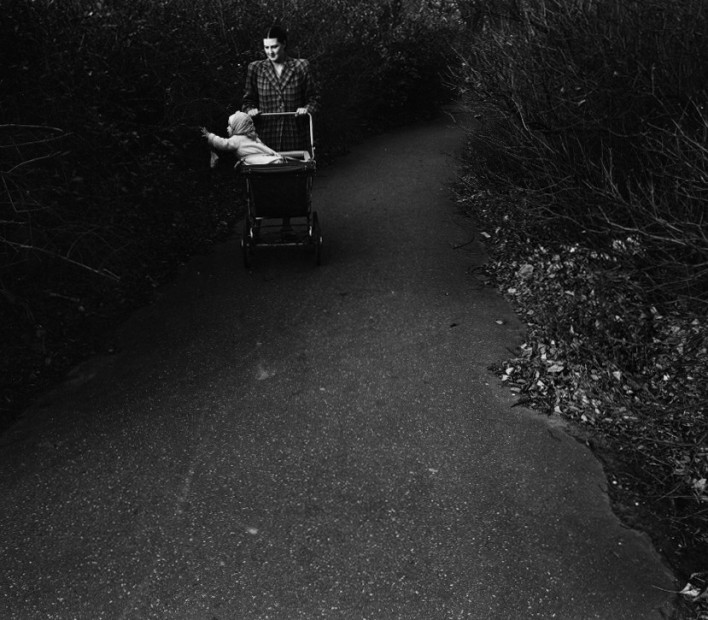 Eleanor and Barbara, 1952Gelatin silver photograph. c1950s print. Annotated "Gift from Harry Callahan c 1950" and signed by Wayne Miller in pencil on print verso. Illus. "Eleanor" p81Contact For Pricing & Availability
Eleanor and Barbara, 1952Gelatin silver photograph. c1950s print. Annotated "Gift from Harry Callahan c 1950" and signed by Wayne Miller in pencil on print verso. Illus. "Eleanor" p81Contact For Pricing & Availability
7 3/16 X 8 1/8 inches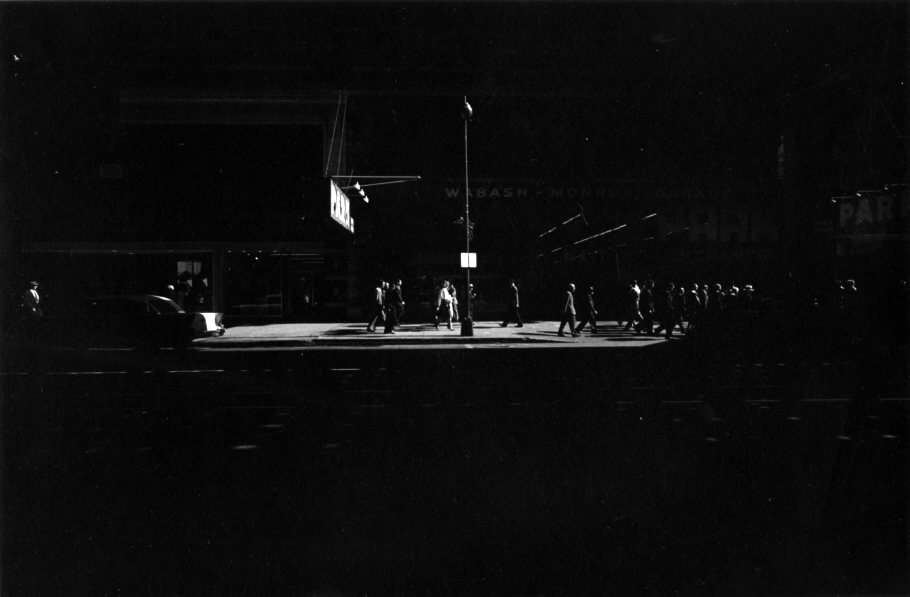 Chicago, Fall, 1958Gelatin silver photograph on mount. 1950s print. Provenance: Harry Callahan to Joseph Jachna.Contact For Pricing & Availability
Chicago, Fall, 1958Gelatin silver photograph on mount. 1950s print. Provenance: Harry Callahan to Joseph Jachna.Contact For Pricing & Availability
6 1/4 X 9 5/8 inches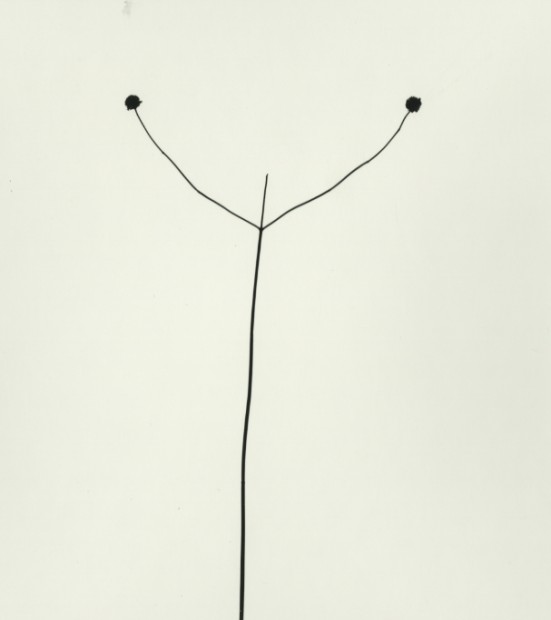 Weed Against Sky, Detroit, 1948Gelatin silver photograph. Later 1960s - e1970s print. Signed in pencil by artist on print margin recto. Provenance: Harry Callahan to Joseph Sterling.Contact For Pricing & Availability
Weed Against Sky, Detroit, 1948Gelatin silver photograph. Later 1960s - e1970s print. Signed in pencil by artist on print margin recto. Provenance: Harry Callahan to Joseph Sterling.Contact For Pricing & Availability
7 1/8 X 6 7/8 inches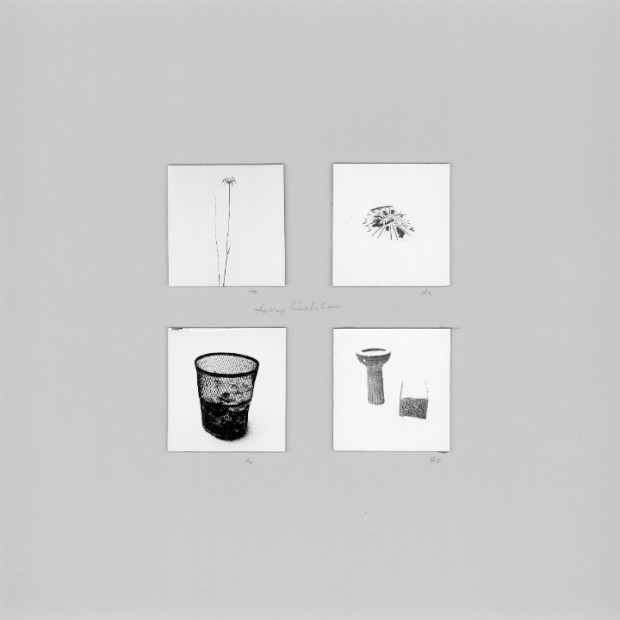 Chicago, Studies, 1948Gelatin silver photographs. Four vintage prints. Signed and initialed under each mounted print on large gray mount recto.Contact For Pricing & Availability
Chicago, Studies, 1948Gelatin silver photographs. Four vintage prints. Signed and initialed under each mounted print on large gray mount recto.Contact For Pricing & Availability
12 1/16 X 12 inches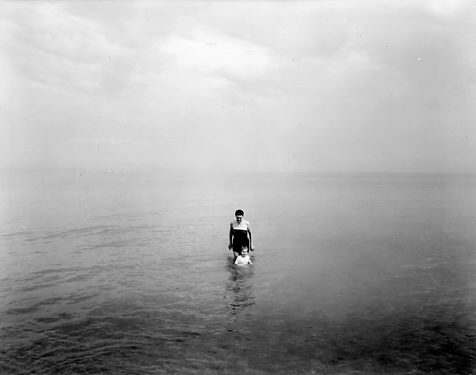 Lake Michigan, c. 1953Gelatin silver photograph. c. 1953 print. Annotated "gift from Harry Callahan c. 1953 Wayne Miller" in pencil on print verso. Illustrated variant pl. 33 in Harry Callahan, Water's Edge, Connecticut: Callaway Editions, 1980.Contact For Pricing & Availability
Lake Michigan, c. 1953Gelatin silver photograph. c. 1953 print. Annotated "gift from Harry Callahan c. 1953 Wayne Miller" in pencil on print verso. Illustrated variant pl. 33 in Harry Callahan, Water's Edge, Connecticut: Callaway Editions, 1980.Contact For Pricing & Availability
8 X 9 15/16 inches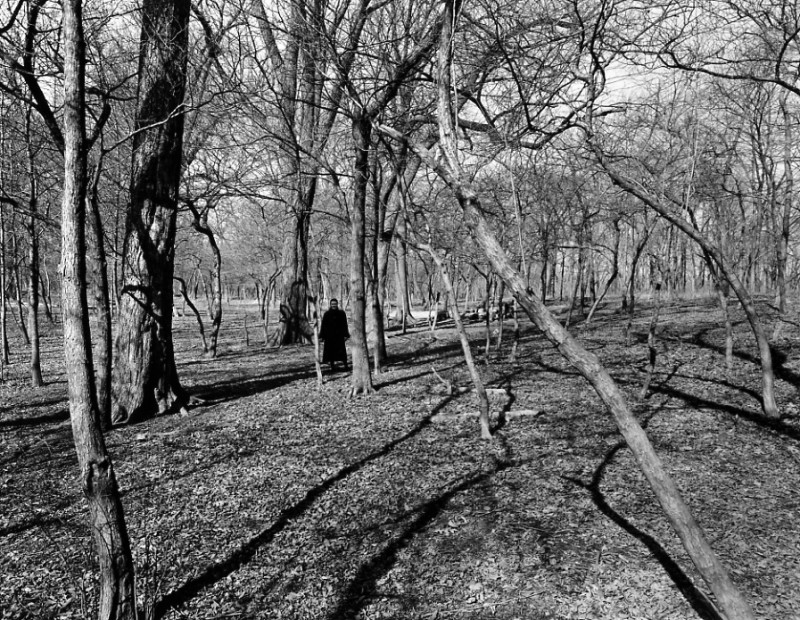 Eleanor, Chicago, 1952Gelatin silver photograph. c.1959 print on mount. Print from the Institute of Design, Student Independent 2.Contact For Pricing & Availability
Eleanor, Chicago, 1952Gelatin silver photograph. c.1959 print on mount. Print from the Institute of Design, Student Independent 2.Contact For Pricing & Availability
7 1/2 X 9 1/2 inches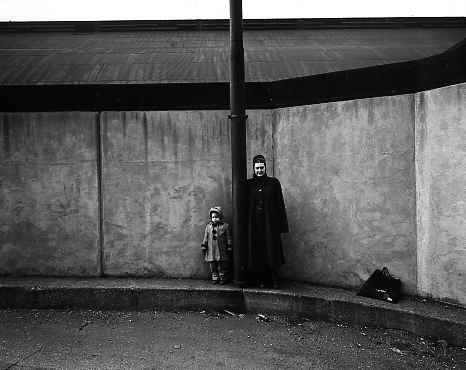 Untitled, Chicago, 1953Gelatin silver photograph. c. 1953 print. Annotated "gift from Harry Callahan c. 1953 Wayne Miller" in pencil on print verso.Contact For Pricing & Availability
Untitled, Chicago, 1953Gelatin silver photograph. c. 1953 print. Annotated "gift from Harry Callahan c. 1953 Wayne Miller" in pencil on print verso.Contact For Pricing & Availability
8 X 9 15/16 inches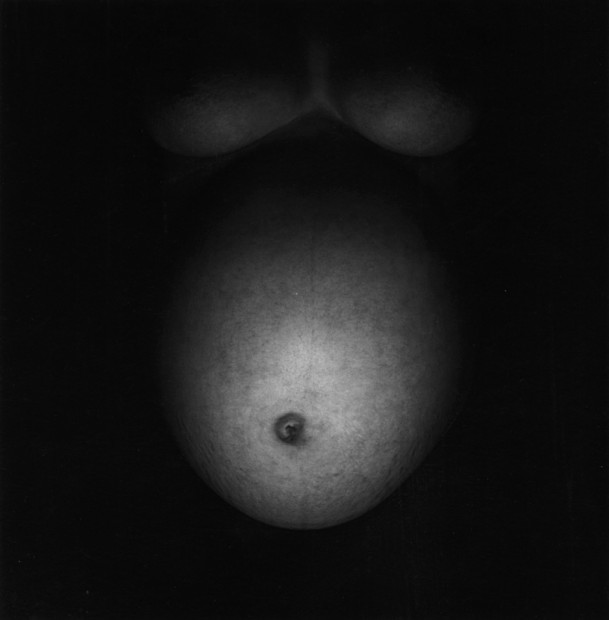 Eleanor, 1949Gelatin silver photograph. c. 1950 print. Annotated "gift from Harry Callahan, Wayne Miller 1949) in pencil on print verso.Contact For Pricing & Availability
Eleanor, 1949Gelatin silver photograph. c. 1950 print. Annotated "gift from Harry Callahan, Wayne Miller 1949) in pencil on print verso.Contact For Pricing & Availability
5 7/8 X 5 3/4 inches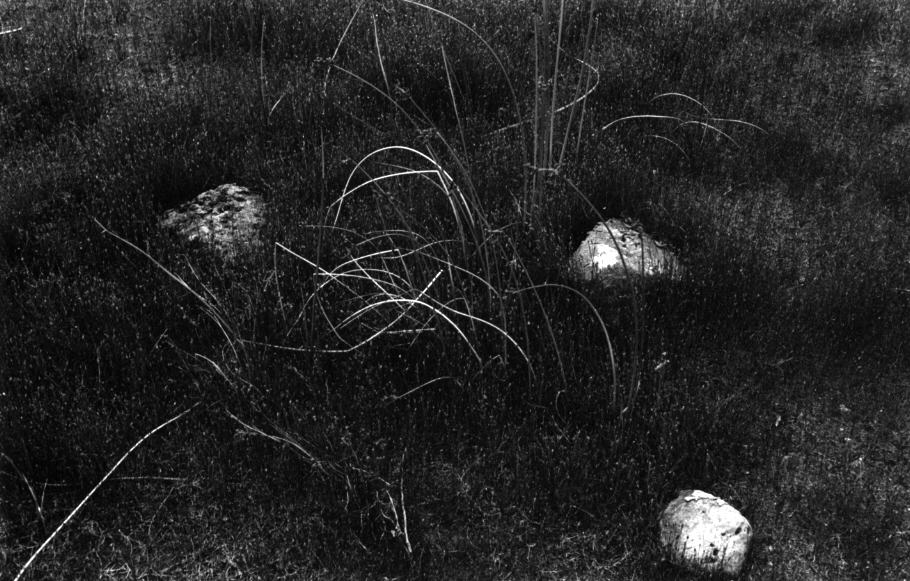 Wisconsin, 1958Gelatin silver photograph on mount. 1958-c1960 print. Provenance: Harry Callahan to Joseph Jachna.Contact For Pricing & Availability
Wisconsin, 1958Gelatin silver photograph on mount. 1958-c1960 print. Provenance: Harry Callahan to Joseph Jachna.Contact For Pricing & Availability
6 1/4 X 9 5/8 inches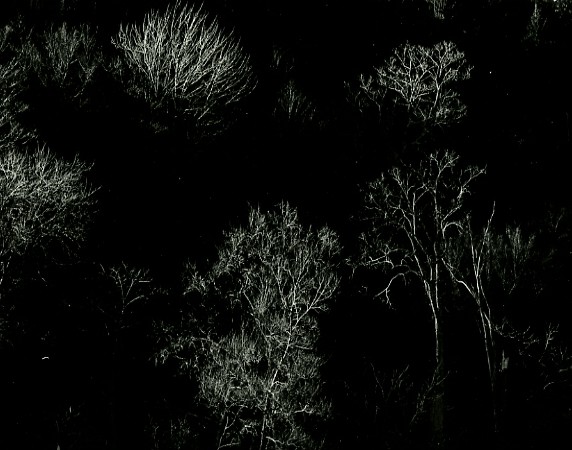 Providence, 1967Gelatin silver photograph. 1960s print. Signed and dated in ink by artist on print verso.Contact For Pricing & Availability
Providence, 1967Gelatin silver photograph. 1960s print. Signed and dated in ink by artist on print verso.Contact For Pricing & Availability
4 13/16 X 6 1/8 inches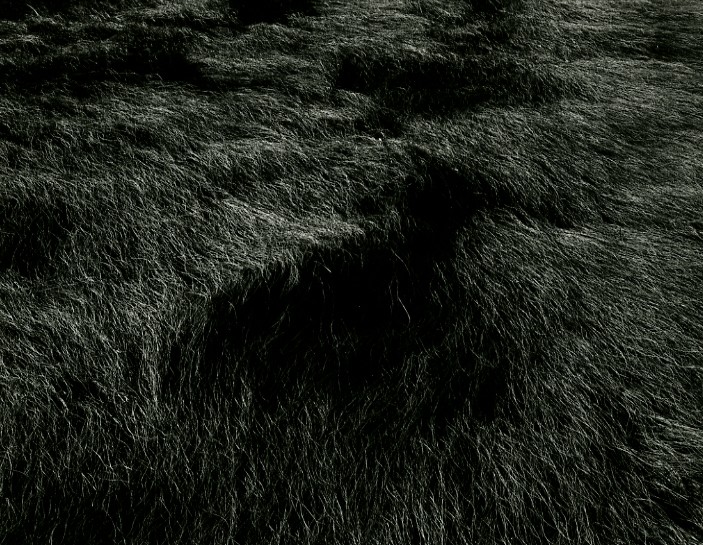 Horseneck Beach, Massachusetts, c. 1965Gelatin silver photograph.Signed in ink by artist on print verso.Contact For Pricing & Availability
Horseneck Beach, Massachusetts, c. 1965Gelatin silver photograph.Signed in ink by artist on print verso.Contact For Pricing & Availability
5 7/8 X 7 17/32 inches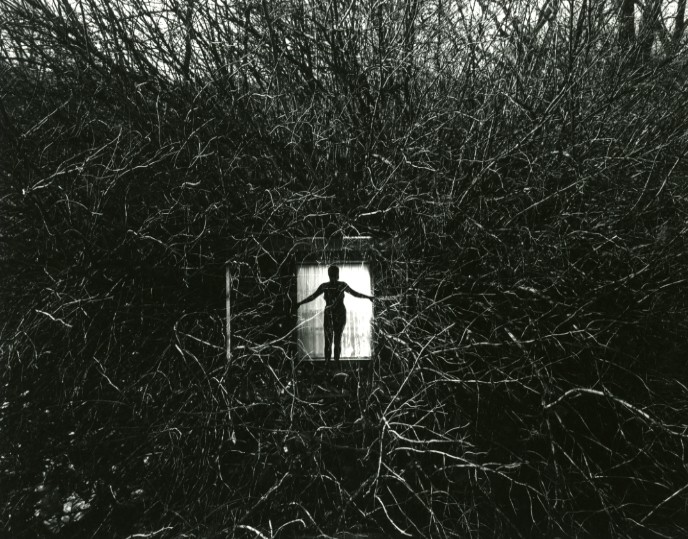 Eleanor, Chicago, 1951Gelatin silver photograph. 1960s-c1970 print. Signed lower recto and upper verso. Illus. pl 39 Cox. Harry Callahan: EleanorContact For Pricing & Availability
Eleanor, Chicago, 1951Gelatin silver photograph. 1960s-c1970 print. Signed lower recto and upper verso. Illus. pl 39 Cox. Harry Callahan: EleanorContact For Pricing & Availability
5 3/4 X 7 1/4 inches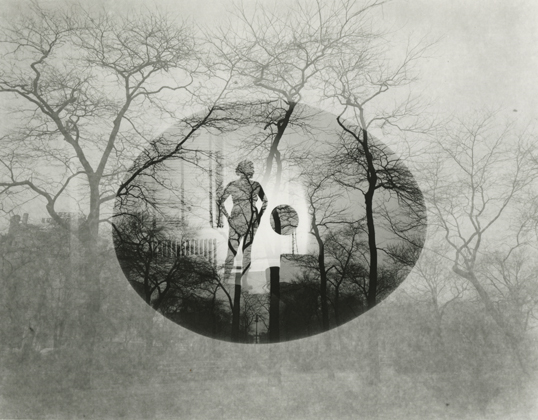 Eleanor, Chicago, 1953Gelatin silver photograph. Late 1960s-e.70s print. Signed in pencil by artist on print margin recto.Contact For Pricing & Availability
Eleanor, Chicago, 1953Gelatin silver photograph. Late 1960s-e.70s print. Signed in pencil by artist on print margin recto.Contact For Pricing & Availability
5 7/8 X 7 1/2 inches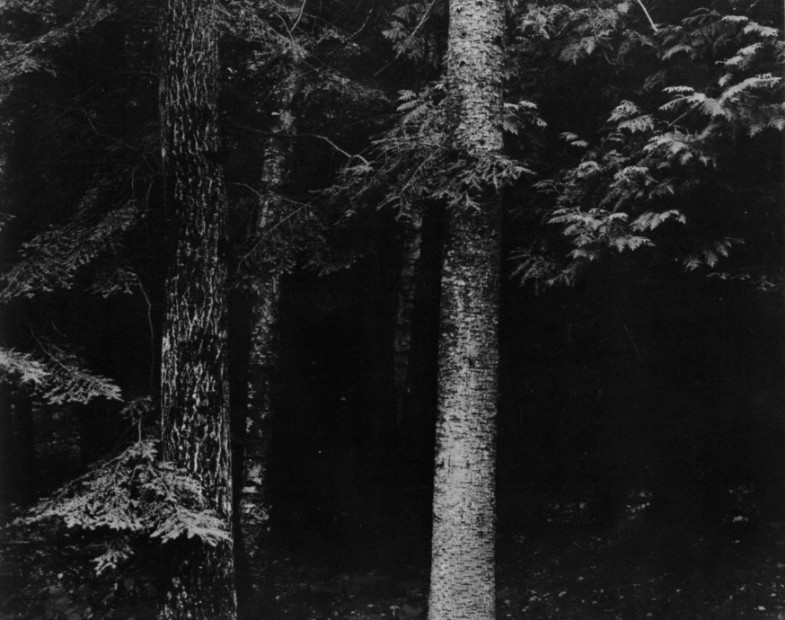 Wisconsin, c. 1954Gelatin silver photograph on mount. 1950s print.Contact For Pricing & Availability
Wisconsin, c. 1954Gelatin silver photograph on mount. 1950s print.Contact For Pricing & Availability
13 X 16 1/2 inches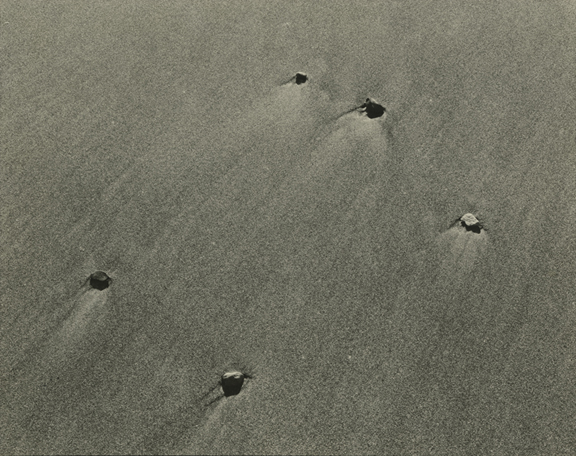 Chicago, 1948Gelatin silver photograph on mount. 1950s prints. Provenance: Ex collection Jonathan Williams. Variant from Water's EdgeContact For Pricing & Availability
Chicago, 1948Gelatin silver photograph on mount. 1950s prints. Provenance: Ex collection Jonathan Williams. Variant from Water's EdgeContact For Pricing & Availability
7 5/8 X 9 5/8 inches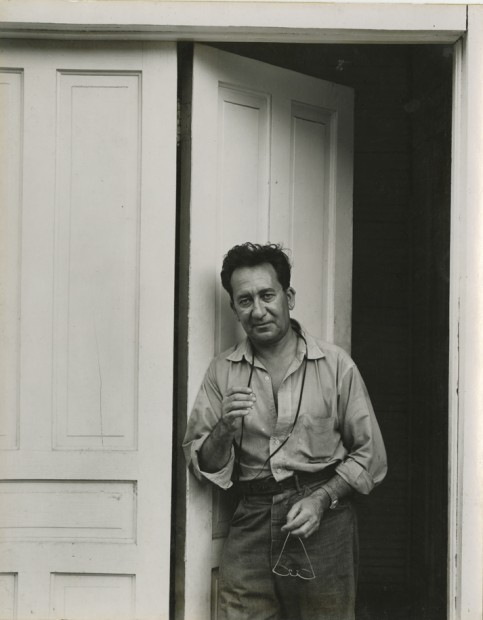 Aaron Siskind, 1951Gelatin silver photograph. Ex-collection Jonathan Williams.Contact For Pricing & Availability
Aaron Siskind, 1951Gelatin silver photograph. Ex-collection Jonathan Williams.Contact For Pricing & Availability
7 3/4 X 9 3/4 inches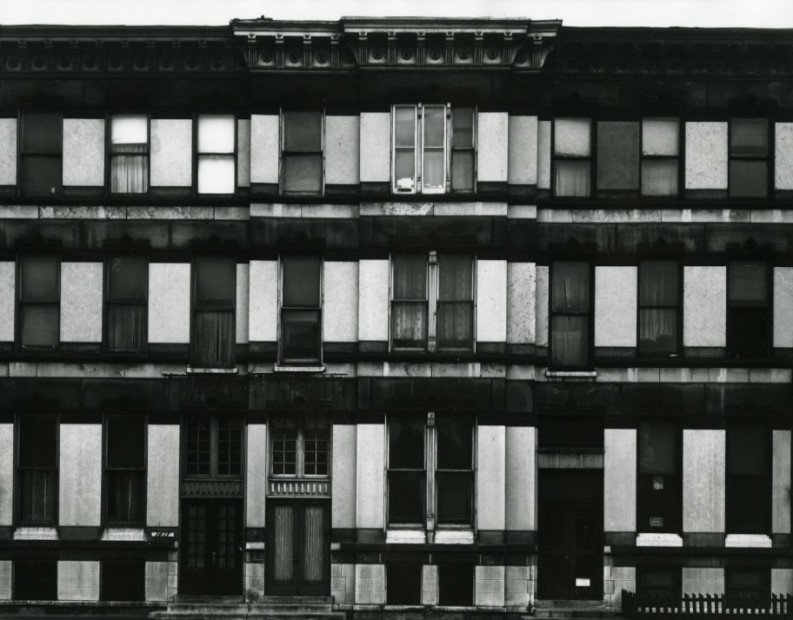 Chicago, 1948Gelatin silver photograph. Likely late 1960s print. Signed in pencil by artist on print margin recto. Also signed in pencil on print verso.Contact For Pricing & Availability
Chicago, 1948Gelatin silver photograph. Likely late 1960s print. Signed in pencil by artist on print margin recto. Also signed in pencil on print verso.Contact For Pricing & Availability
7 5/8 X 9 5/8 inches
Harry Callahan
Harry Callahan was born in Detroit in 1912. He had no formal training as a photographer and according to his own later writings (of which he left few examples) he was ‘terrifically naive,’ which he considered a great strength. He was a hobbyist until 1941, (after having abandoned his engineering studies at Michigan State University), when he began refining his skills at the Detroit Photo Guild, where he met Arthur Siegel. It was also there that he first saw work by Ansel Adams which inspired Callahan to search for his own photographic style. Siegel later became the head of photography at the Institute of Design and recommended that Moholy-Nagy hire Callahan, who joined the school in the summer of 1946 and taught there until 1961, save for a year-long sabbatical, spent in France (1957-58) on a Graham Foundation Fellowship. In 1949 Callahan became the head of the I D photography department and was instrumental in bringing in Aaron Siskind to teach, resulting in the now legendary teaching duo, whose influence profoundly affected the next generation of photographers, artists and teachers. Throughout his career, Callahan explored a number of different subjects including abstracted landscapes of nearby trees, grasses and water, and city streets with their pedestrians and architectural facades. He also concentrated on intimate and creatively rigorous portraits of the two women in his life, his wife Eleanor and his daughter Barbara. He offered masterful glimpses of the ordinary elements of life in an elegant, modernist style. Callahan explored many different techniques including the use of extreme contrast, collage, multiple and time exposures, and camera motion in his work. His techniques were often employed to refine subject matter to its almost abstract essence with the surfaces of his prints gleaming with an almost mathematical but lyrical precision. He was a perfectionist, creating comparatively few finalized works. Noted also as a man of few words, Callahan taught largely by example, leaving the eloquent and more social Siskind, (a former school teacher), to communicate to the students verbally. to 1961 Callahan took an offer to teach at the Rhode Island School of Design, where he taught until retiring in 1977. He then began to photograph exclusively in color, focusing on the beaches and seaside communities of New England. In 1983 The Callahans moved to Atlanta, Georgia where Harry lived and worked until he died in 1999. In 1996 he was awarded the National Medal of Arts. Harry Callahan is one of the most influential and lauded photographers of the twentieth century. His works are in the collections of every major museum as well as in countless private collections in the country and Europe.
